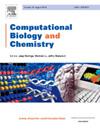Comparative anti-oxidant and anti-inflammatory study of diverse honey types of Kashmir valley through In Vitro, analytical chemistry and computational approach
IF 2.6
4区 生物学
Q2 BIOLOGY
引用次数: 0
Abstract
Diverse factors including geographical and floral origin have marked impact on honey parameters. These factors in the long run influence the different activities exerted by honey. Herein, we performed the novel comparative study of five different honey types of Kashmir valley differing in floral origin apart from latitude, longitude and altitude. Following the rigorous comparison of their antioxidant and anti-inflammatory activity through In vitro study, the most promising honey was screened for various molecules using high-resolution liquid chromatography mass spectrometry (HR-LCMS) approach. Moreover, the identified molecules were docked against the inflammation implicated molecular targets namely histone deacetylase (HDAC)-3 and cyclooxygenase-2 (COX-2). Eventually, the binding free energy assessment was performed using conventional and thermal molecular mechanics with generalized Born surface area (MM-GBSA). The maximum binding affinity demonstrating molecule was evaluated for stability and compatibility with COX-2 by making the use of extended molecular dynamics simulation method. This study proved Robinia pseudoacacia honey has the maximum potential for alleviating the free radicals and inflammation. Further, the luteolin and genistein confirmed through HR-LCMS evinced the highest propensity of binding towards COX-2 and HDAC3 respectively.
通过体外、分析化学和计算方法比较克什米尔山谷不同类型蜂蜜的抗氧化和抗炎作用
地理和花卉产地等多种因素对蜂蜜参数有显著影响。这些因素长期影响着蜂蜜所发挥的不同活性。在此,我们进行了新颖的比较研究五种不同类型的蜂蜜克什米尔山谷不同的花源除了纬度,经度和海拔。通过体外研究对其抗氧化和抗炎活性进行了严格的比较,并利用高分辨率液相色谱-质谱(HR-LCMS)方法筛选了最有希望的各种分子。此外,鉴定的分子与炎症相关的分子靶标,即组蛋白去乙酰化酶(HDAC)-3和环氧化酶-2 (COX-2)对接。最后,采用广义Born表面积(MM-GBSA)的常规分子力学和热分子力学方法对其结合自由能进行评估。利用扩展的分子动力学模拟方法评价了展示分子的最大结合亲和力,以评价其与COX-2的稳定性和相容性。本研究证明刺槐蜂蜜具有最大的缓解自由基和炎症的潜力。此外,通过HR-LCMS证实的木犀草素和染料木素分别对COX-2和HDAC3的结合倾向最高。
本文章由计算机程序翻译,如有差异,请以英文原文为准。
求助全文
约1分钟内获得全文
求助全文
来源期刊

Computational Biology and Chemistry
生物-计算机:跨学科应用
CiteScore
6.10
自引率
3.20%
发文量
142
审稿时长
24 days
期刊介绍:
Computational Biology and Chemistry publishes original research papers and review articles in all areas of computational life sciences. High quality research contributions with a major computational component in the areas of nucleic acid and protein sequence research, molecular evolution, molecular genetics (functional genomics and proteomics), theory and practice of either biology-specific or chemical-biology-specific modeling, and structural biology of nucleic acids and proteins are particularly welcome. Exceptionally high quality research work in bioinformatics, systems biology, ecology, computational pharmacology, metabolism, biomedical engineering, epidemiology, and statistical genetics will also be considered.
Given their inherent uncertainty, protein modeling and molecular docking studies should be thoroughly validated. In the absence of experimental results for validation, the use of molecular dynamics simulations along with detailed free energy calculations, for example, should be used as complementary techniques to support the major conclusions. Submissions of premature modeling exercises without additional biological insights will not be considered.
Review articles will generally be commissioned by the editors and should not be submitted to the journal without explicit invitation. However prospective authors are welcome to send a brief (one to three pages) synopsis, which will be evaluated by the editors.
 求助内容:
求助内容: 应助结果提醒方式:
应助结果提醒方式:


